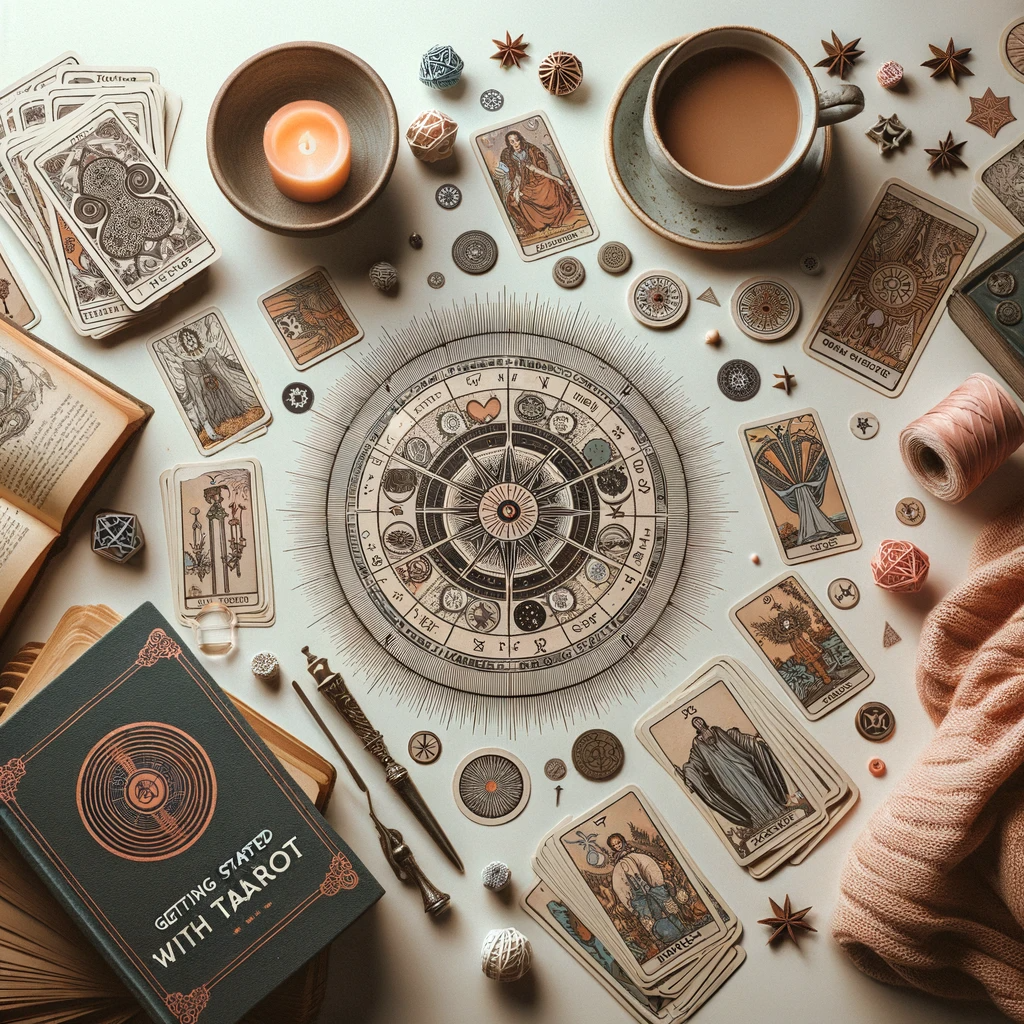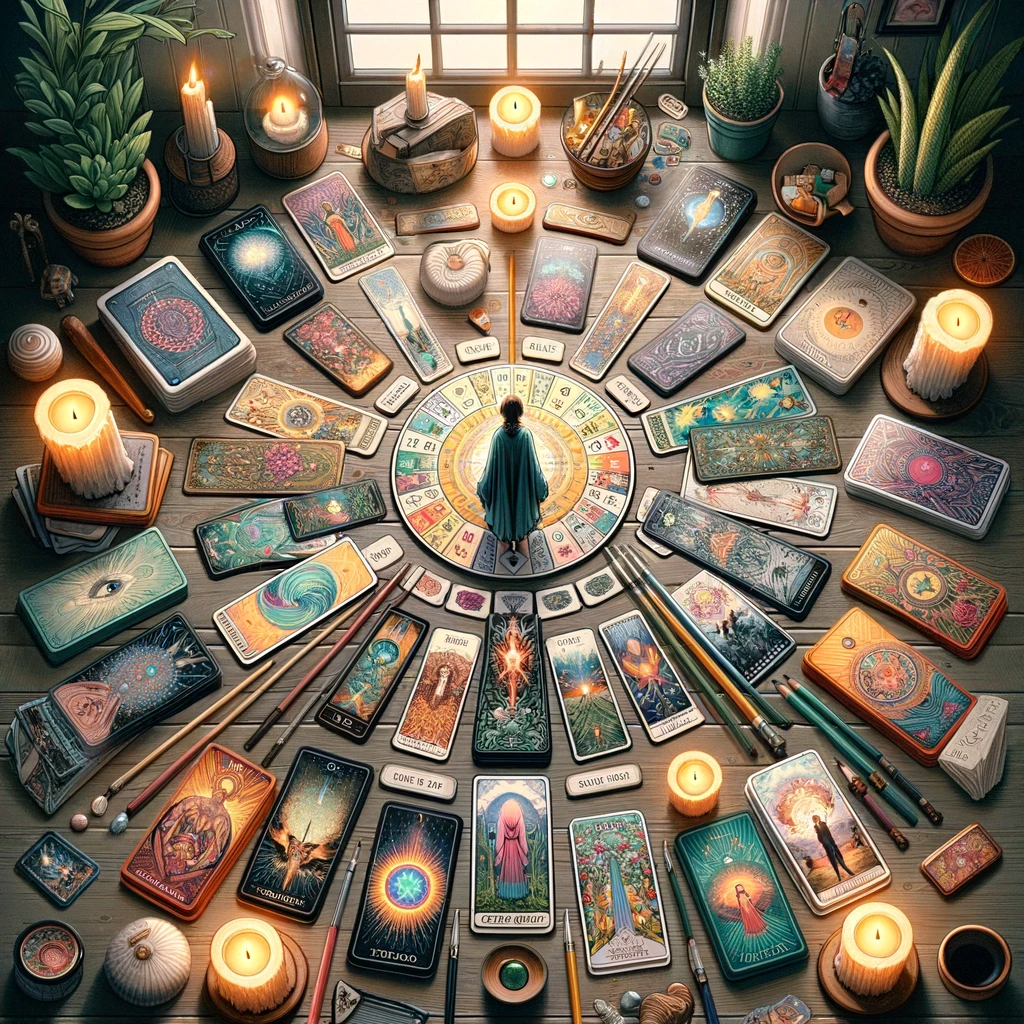Getting Started with Tarot: A Beginner’s Guide to Reading the Cards

Introduction
Tarot cards have been used for centuries as a tool for divination, guidance, and self-reflection. In recent years, tarot has experienced a resurgence in popularity, with more and more people turning to the cards for insight into their lives.
For beginners, learning to read tarot can seem intimidating at first. With mysterious imagery and esoteric symbolism, tarot requires some study to use effectively. However, with the right guidance, anyone can learn the basics of tarot reading.
In this comprehensive beginner’s guide, you’ll learn everything you need to start reading tarot cards right away. We’ll cover choosing a deck, getting familiar with the cards, basic spreads, conducting readings, and tips for sharpening your interpretation skills as you get more experienced. Whether you’re reading for yourself or others, this guide will equip you with the knowledge to handle the cards skillfully and get powerful insights.
Ready to unlock the secrets of tarot? Let’s get started!

Step 1: Choose a Tarot Deck
The first step in reading tarot is selecting a deck that resonates with you. There are many different tarot decks available, with various art styles and themes. For your first deck, it’s best to choose a traditional 78-card tarot deck with the standard suits and numbering. Popular beginner decks include the Rider-Waite and the Morgan Greer.
Consider the following when choosing your first tarot deck:
- Artwork – Pick a deck with symbolism and imagery that speaks to you intuitively. The cards should feel meaningful at first glance.
- Interpretation resources – Look for a deck that has a handbook or guidebook to help you interpret the card meanings. The Rider-Waite deck is a great starter choice because endless resources exist to help with card interpretations.
- Card size & quality – Larger cards with thick cardstock will be easier to shuffle and handle as a beginner.
- Theme – Standard decks feature traditional European medieval imagery. You can also find themed decks tailored to various interests, cultures, and spiritualities when you are ready to branch out.
Take your time choosing a tarot deck – this is the foundation you’ll build your tarot skills upon. Once you have a deck in hand, you can move on to learning the cards.
Step 2: Learn the Cards
Familiarizing yourself with the 78 cards of the tarot deck is essential for reading. There are two main sections of a tarot deck:
The Major Arcana
The first 22 cards, numbered 0-21, which depict archetypal figures and concepts. These cards represent significant soul lessons and spiritual mysteries. Some key cards include:
• The Fool – Beginning of the journey, new possibilities
• The Magician – Manifestation, resources, capabilities
• The High Priestess – Intuition, sacred knowledge, the subconscious
• The Hierophant – Mentorship, tradition, conformity
• The Lovers – Relationships, choices, duality
• The Hermit – Solitude, inner guidance, introspection
• The Wheel of Fortune – Destiny, cycles, good luck
• The Hanged Man – Surrender, new perspective, sacrifice
The Minor Arcana
The remaining 56 cards, divided into four suits of 14 cards each. The suits are associated with the four elements and aspects of life:
- Wands – Fire energy, creativity, passion, enterprise
- Cups – Water energy, emotions, relationships, spirituality
- Swords – Air energy, intellect, conflict, decisions
- Pentacles – Earth energy, material world, prosperity, health
Each suit contains 10 numbered cards (Ace to 10) depicting events and circumstances, and 4 court cards – the Page, Knight, Queen, and King.
To start reading tarot, memorize the key symbols, archetypes, and meanings for each card. With repetition, the imagery and interpretations will become second nature. Flashcards and tarot guidebooks can help you learn.

Step 3: Understand the Basic Tarot Spreads
Tarot spreads are specific patterns in which the cards are laid out and interpreted during a reading. Different spreads provide insight into different situations. As a beginner, sticking to simple spreads is best as you build your tarot muscle memory.
The 3-Card Spread
A straightforward spread that provides a quick snapshot of the past, present, and future. Position 1 represents the past, Position 2 addresses the present, and Position 3 reveals the future.
The Celtic Cross Spread
A popular 10-card spread that provides a well-rounded perspective on a situation or question. The first six cards form a cross shape and represent the present, challenges, foundations, recent past, goals/destiny, and future. The last four cards clarify and expand on the cross.
The Horseshoe Spread
This 7-card horseshoe shape spread delivers guidance and advice on a problem or situation. Cards 1-3 are the situation, reading left to right. Cards 4-7 present advice and possible outcomes.
Start with these three spreads and branch out as you gain experience. Always remember to focus on reading the cards as a cohesive narrative.
Step 4: Conduct Your First Reading
Once you’re familiar with the card meanings and spreads, you’re ready to do a full reading! Follow these steps for your first reading:
- Clear your energy – Ground and center yourself before a reading through deep breathing, burning sage or palo santo, visualizing protective light around you – whatever spiritual practice suits you. This keeps your energy neutral.
- Set your intention – Before shuffling, concentrate on your question or the area of life you want insight on. Phrase your intention clearly in your mind.
- Shuffle & cut the deck – After stating your intention, shuffle the cards thoroughly while concentrating. When ready, cut the deck into three piles, then reassemble the deck. This infuses the cards with your energy.
- Select your spread – Choose a simple spread to start, like the 3-card or the Celtic Cross. Layout the spread pattern.
- Interpret the cards – Using your knowledge of the card meanings and relationships between cards, interpret the spread. Read the narrative formed and derive insight for your question.
- Keep notes – Record your spread and interpretation by taking notes or snapping photos. This helps remember readings and track how situations unfold.
- Cleanse the cards – At the end of a reading, thank the cards for their guidance. Neatly stack the deck and store safely. Wafting sage smoke over the cards helps cleanse residual energy.
With practice, your card interpretation skills will grow sharper. Be patient with yourself as a tarot beginner – intuition develops over time. Next, let’s go over tips for improving your reading fluency.

Tips for Reading Tarot Fluently
Mastering tarot reading takes time and consistent practice. Use these tips to deepen your connection with the cards:
- Read for yourself regularly. The more you work with your deck, the better you’ll know it.
- Keep tarot journaling to record spreads and notes on interpretations. Review regularly.
- Study imagery and symbolism on each card closely for deeper insights.
- Look for repeating cards, suits, and numbers in spreads – these are important patterns to notice.
- Don’t just memorize meanings – learn the stories, symbols, and archetypes behind each card.
- Pull a “card of the day” each morning to become familiar with more cards.
- Read multiple sources to understand cards – each writer interprets tarot a bit differently.
- Believe in your innate intuition – trust your first instincts when reading the cards.
- Be open to evolving a card’s meaning over time based on your experience.
With dedication to daily reading, journaling, and inner reflection, your connection with tarot will flourish.
FAQ
Still have some lingering questions about getting started with tarot? Here are answers to some frequently asked questions:
How accurate are tarot readings?
Remember that no reading can definitively predict the future. Tarot provides insight into energies, themes, and potential outcomes – but you have an active role in shaping your path. The accuracy depends on your reader’s skill level and interpretive ability.
Do the cards have “wrong” or “right” meanings?
There are established interpretations for each card, but no inherently right or wrong meanings. A good reader taps into the underlying themes and uses intuition. The cards combine with the reader’s energy to create a unique narrative.
Should I read for others?
Get plenty of solo practice under your belt before trying to read for others – at least 6 months to a year. Make sure you feel confident interpreting the cards fully before providing guidance to others based on the cards.
How often can I do a spread about the same topic?
It’s best to wait 1-2 weeks between readings around the same issue. This gives time for energies to shift and circumstances to change. Don’t use tarot obsessively to analyze – take action inspired by the messages received.